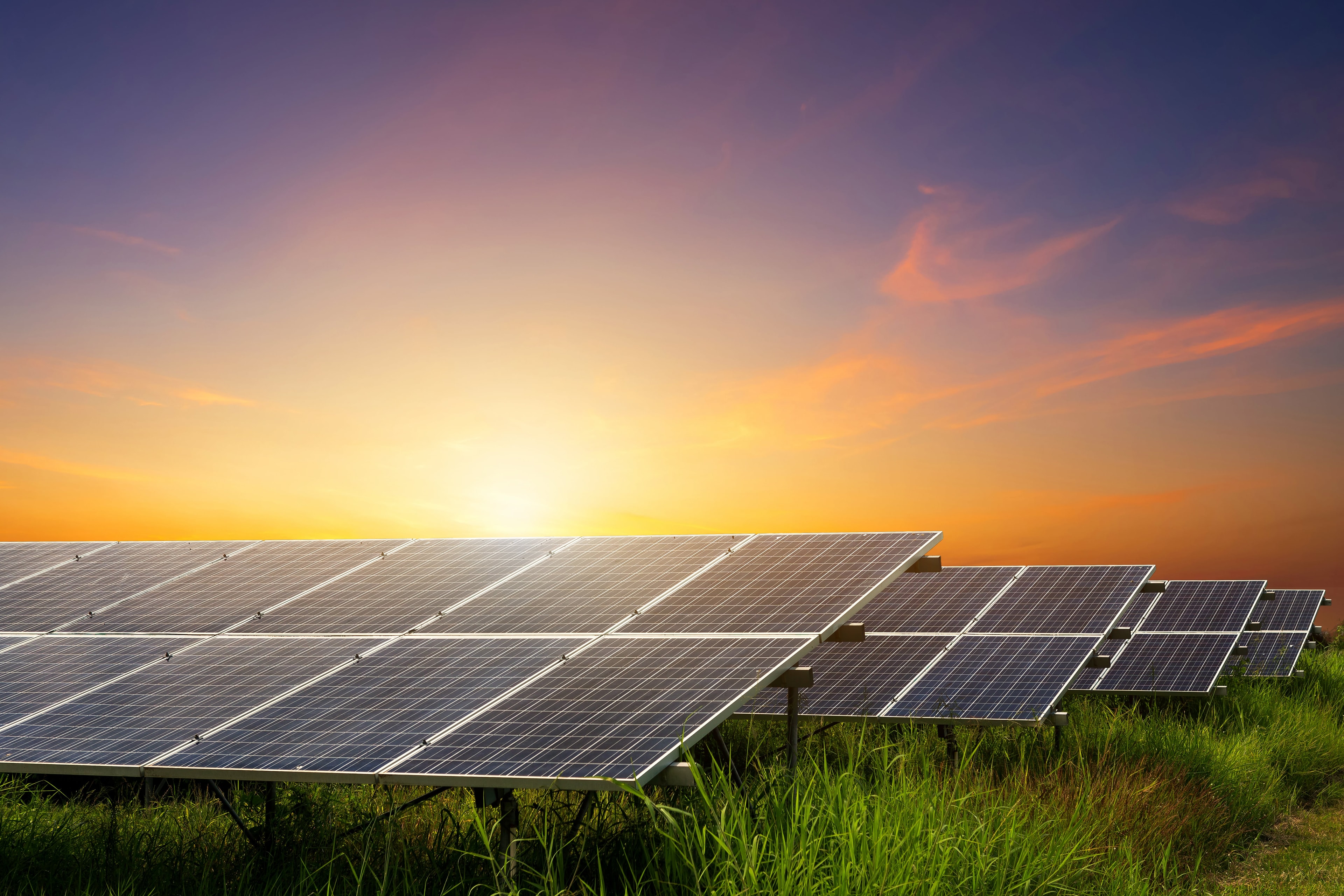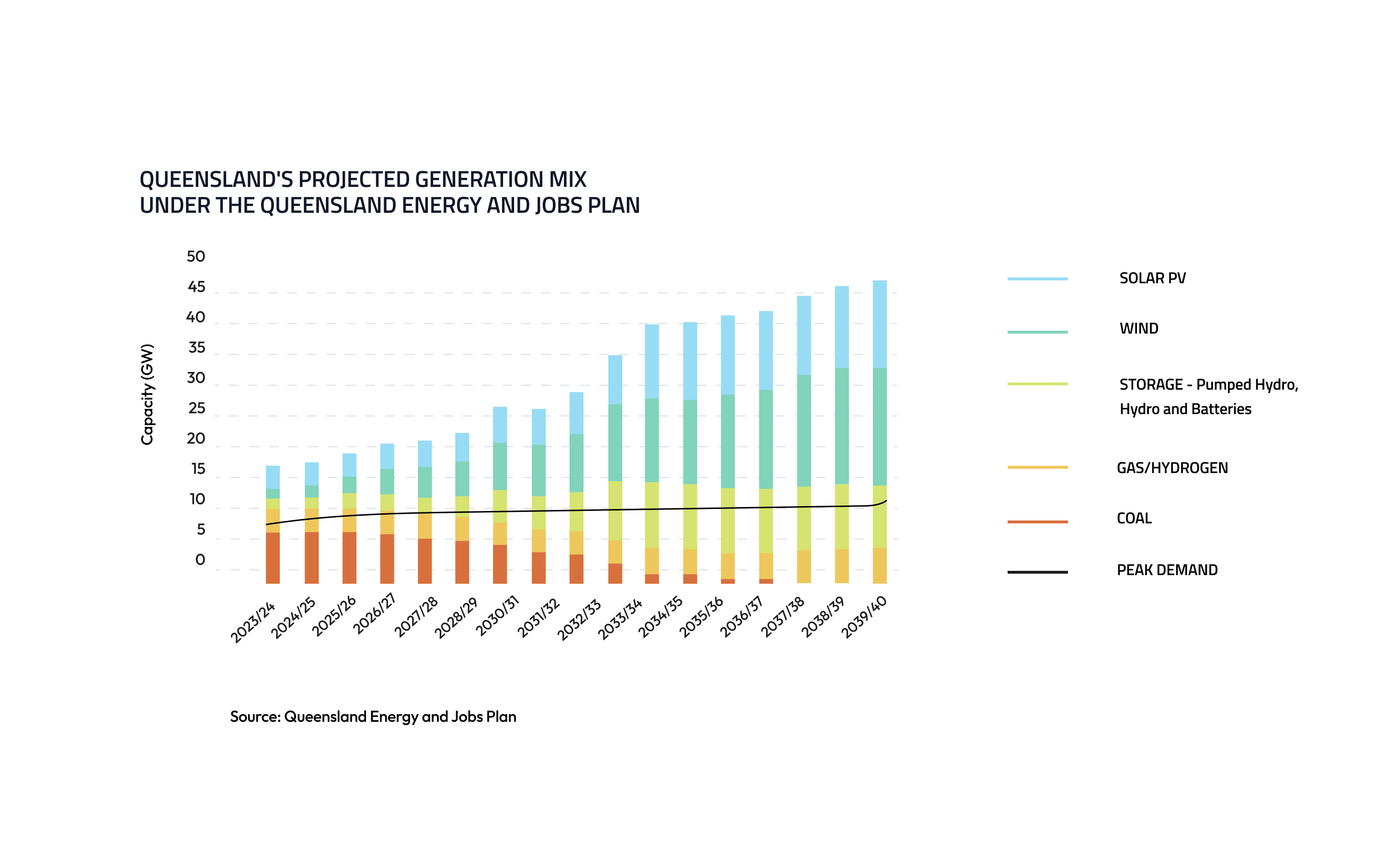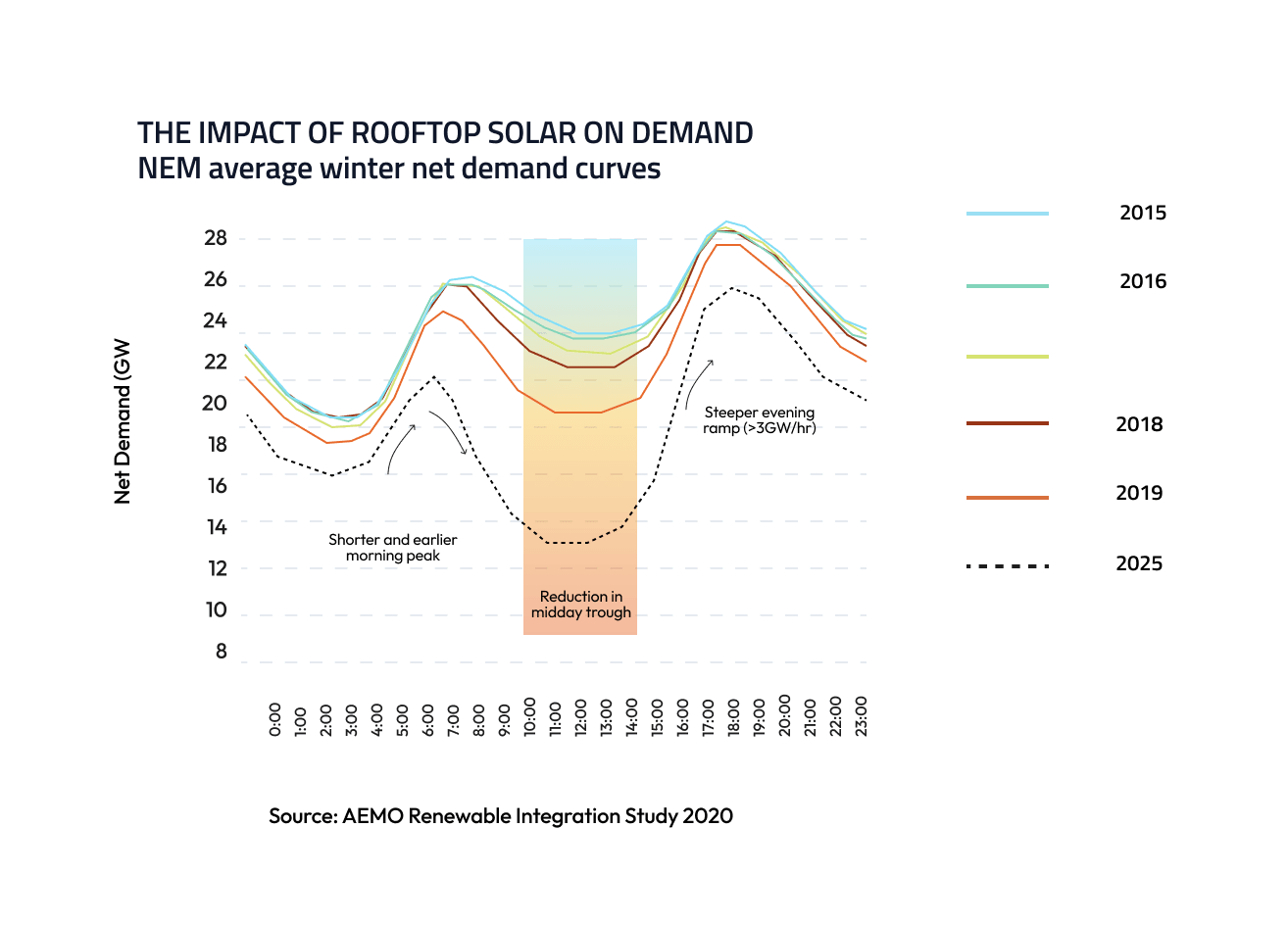Why don’t we use more solar power?
Why don’t we use more solar power?

The sun generates enough energy every hour to power the globe for a year, and Australia gets more solar radiation per square metre than any continent on Earth – so you might be wondering, why can’t we rely solely on solar?
Australians have certainly been enthusiastic adopters of solar power. We set rooftop solar records for the fifth year in a row in 2021, with 3 gigawatts (GW) of rooftop capacity installed. Of those, 1.7 GW were on residential roofs and 1.3 GW were on commercial and industrial roofs, with more than a quarter of Australian households now using rooftop solar panels to generate electricity.
Queensland, specifically, has the highest rate of household rooftop solar installation in Australia, with one in three homes now using solar panels – and that number is climbing.
But there are good reasons why we can’t just use the power of the sun for all of our energy needs. Here are the challenges that are currently restricting the use of solar power, and what we can do about it.
Sun’s out, fun’s out
As we all know, solar panels require sunlight to generate power. Like wind turbines, solar generators are a variable, or intermittent, energy source – their output is dependent on the weather.
When there is little to no solar generation – during rainy and cloudy weather, for instance, or when generation stops altogether at night – we need to turn to alternative sources of energy, whether it’s the ‘always on’ supply provided by baseload units (typically coal-fired generators) or the on-demand flexibility of peaking plants, which include gas-fired generators, hydro and pumped hydro plants.
The solution: Unfortunately, we can’t do much about the variability of the weather – but we can store the energy that’s produced when the sun is shining.
Electricity itself can’t be stockpiled like coal can, but it can be converted into other forms of energy which can be stored and reconverted to electricity when required. Batteries don’t actually store electricity, for instance, but they do store chemicals that can be converted into electricity, through a process known as electrochemistry.
At times of low demand, solar energy can also be used to power the production of renewable hydrogen, which can be stored for long periods of time and converted back into electricity to be dispatched when the market needs it.
Similarly, available solar energy can be used at times of low demand to power pumped hydro plants, which pump water from a lower reservoir up to a higher reservoir through a conduit or tunnel. When electrical energy is needed, the water flows back down into the lower reservoir through a turbine. This causes the turbine’s blades to rotate, driving a generator connected to it that converts the turbine’s motion into electricity.
The Queensland Energy and Jobs Plan includes over $270 million to progress two world-class pumped hydro facilities – the Borumba Pumped Hydro west of Gympie, and the Pioneer-Burdekin Pumped Hydro west of Mackay, which would become the largest pumped hydro storage facility in the world. It also includes $500 million in funding for grid-scale and community batteries, to help power the grid when the sun isn’t shining (and the wind isn’t blowing).
Collectively, the two pumped hydro projects – which are both subject to environmental assessments – would give Queensland the most hydro storage of any state in Australia.

The Plan also includes a $20 million investment to kickstart Queensland’s renewable hydrogen hubs, and a commitment to integrate zero-emissions vehicles into the energy grid, so that motorists can use their electric cars to soak up solar energy during the day, and then export that energy to the grid or use it to help power their homes at night.
Securing the system
Unfortunately, you can have too much of a good thing. Even when there is plenty of sunshine, this can lead to a different kind of problem.
When households and businesses are unable to use all of their rooftop solar system’s output, this has the effect of reducing demand for generation from the energy grid in the middle of the day. Grid demand peaks again when the sun goes down and people need power when they get home at the end of the working day.

Australia’s world-leading uptake of rooftop solar has led to record lows for demand for energy from the National Electricity Market.
The problem is that there are thresholds for operational security that demand cannot fall below. The Australian Energy Market Operator (AEMO), responsible for managing the day-to-day operation of Australia’s energy markets and systems, estimates at least 4 to 6 gigawatts (GW) of operational demand is required in the NEM at any given time in order for the system to be operated securely.
That’s because, at least for now, a minimum number of synchronous generators – such as coal-fired and gas-fired generators – must be online, at or above minimum generation levels, to supply essential system services.
For example, these synchronous generators provide the grid with what’s known as ‘inertia’ – essentially a shock absorber for the grid that gives it the ability to withstand surges and imbalances in supply and demand, and recover from system disturbances..
A lack of inertia exposes the grid to instability. Synchronous generators are able to provide it because they are physically directly connected to the grid and usually spin at the same frequency as the energy system, but non-synchronous generators – such as solar panels and wind turbines – are currently unable to provide inertia, because they’re not synchronised to the grid by a rotating mass, but rather by power electronics systems.
The reduction in demand for power from synchronised generators during the middle of the day makes it challenging for them to operate in an efficient and cost-effective manner. If this problem isn’t addressed, adding more solar power to the mix would only exacerbate it.
The solution: AEMO’s 2022 Integrated System Plan floats the possibility of advanced inverters, connected at strategic sites in the NEM, as possible sources of inertia and system strength.
Under the Queensland Energy and Jobs Plan, coal-fired power stations will continue to serve in a back-up capacity for as long as required. By 2035, it’s expected that these power stations will become clean energy hubs, home to grid-scale batteries, as well as gas (and later hydrogen) power stations.
The large spinning generators at the stations will progressively be converted to synchronous condensers, enabling them to continue to provide inertia and strength for the grid.
A lack of coordination
AEMO actively manages the dispatch of energy from centralised generators to maintain precise supply-demand balance. This includes coal and gas units, but it also includes large-scale solar and wind generators, as well as pumped hydro units.
But most rooftop solar systems can’t be actively managed by AEMO, even under emergency conditions.
Additionally, local network distribution lines can only carry so much energy, so when too much solar energy is fed into the grid at the same time, the lines can become congested and the local grid can become overloaded, leading to disruptions and localised blackouts.
The solution: We’ll need a smarter grid to manage rooftop solar systems and home batteries – also known as Customer Energy Resources (CER) – and enable homes and businesses to get the most out of their investments.
That’s why the Queensland Energy and Jobs Plan calls for the development of a two-way energy market – one that’s truly designed for power to flow from homes and businesses, as well as to them.
This includes a commitment to 100 per cent penetration of smart meters by 2030, to provide the data required to manage the two-way flow of energy in real-time, as well as a commitment to increasing the rollout of dynamic connection arrangements for customers.
These dynamic connection arrangements would allow households and businesses to participate in energy trading, or become part of a Virtual Power Plant, in which individual customers’ systems are coordinated to work together as a single power plant – a literal internet of energy. This way, home battery systems can be used to soak up excess solar power and dispatch it to the grid in a coordinated way that ensures supply and demand is balanced.

With all of these developments and improvements, it will be possible to safely connect more renewables to the grid. Under the Queensland Energy and Jobs Plan, 70 per cent of the state’s power will come from renewable sources by 2032, and 80 per cent by 2035, with the rest coming from low to zero emissions gas.
This will mean Queenslanders have clean, reliable and affordable power for generations – and ensure we’re making the most of the solar power the sunshine state has on tap.
Learn more about the Queensland Energy and Jobs Plan from the Queensland Government.
Subscribe to our newsletter
STANWELL SPARK
Stay up to date with quarterly news from Stanwell, delivered straight to your inbox. Learn more about our projects, partnerships and how we're delivering affordable, reliable and secure electricity for Queensland.